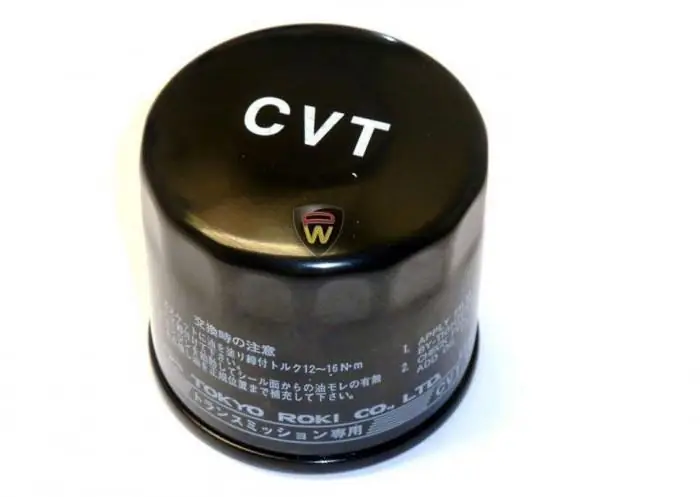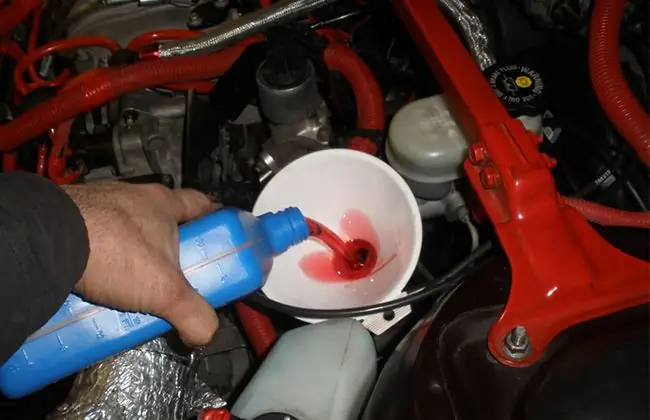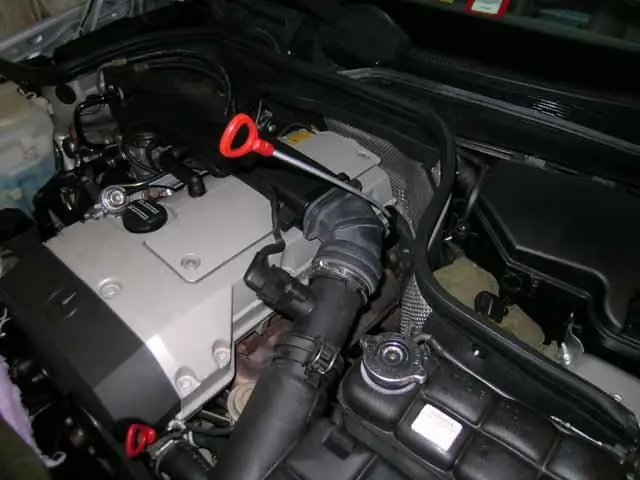2025 Author: Erin Ralphs | [email protected]. Last modified: 2025-01-22 21:14:11
The gear box is made up of many rotating elements. These are gears and shafts. Like an internal combustion engine, it has its own lubrication system. On mechanical boxes, it is slightly different. Here, the oil does not perform the function of transmitting torque. Gears are only “dipped” into it during rotation. However, this does not mean that it does not require replacement. Well, let's look at whether an oil change is needed in a manual transmission, and how to do it yourself.
Should I change at all? About the resource
In the operating instructions, manufacturers often do not regulate the service life of this lubricant. According to them, the oil in the box is filled for the entire period of operation. However, in reality, the lubricant resource in a mechanical box is 60 thousand kilometers.

After this period, the oil begins to quickly lose its properties. The product changesand absorbs all the output from the gears - chips. It then acts as an abrasive, reducing the life of the shafts and teeth.
Untimely oil change in a manual transmission can lead to a quick failure of the box. It is important not only to comply with the regulations, but also to periodically check its residue level in the transmission. If the gearbox “sweats” and has characteristic streaks, the gears will not be adequately lubricated. Pay special attention to this when placing the machine on a lift.
Signs that signal the need for replacement
One of the tell-tale signs is a tight shift. If the oil level is below normal or it is completely absent, a characteristic hum will soon appear when driving. He may appear on one or all shows at once.
But in any case, you need to look at the mileage. If this is a freshly bought used car, experts recommend immediately performing this operation. In this way, you will eliminate the possibility of malfunctions associated with wear on the teeth.
Which one to choose and how much to pour?
As you know, the viscosity of transmission oil is an order of magnitude higher than that of engine oil. When choosing a new fluid, you must be guided by the manufacturer's recommendations. What viscosity to choose if manual transmission oil is being replaced? "Focus", for example, is operated on 75W-90 grease.
Another common question - how much should be filled? Here opinions of motorists diverge. If this is a Ford Focus manual transmission oil change, you need to purchase 2 liters of fluid. On Nissan cars, you need to use up to three liters. If producedoil change for manual transmission "Kia Rio", up to 1.9 liters is poured into the box.
In terms of viscosity, the best option would be 75W-85 of the fourth grade according to API. As for manufacturers, many trust trusted brands:
- Castrol.
- Motul.
- Mobil-1.
- "ARAL".
Prices
The cost of oils can vary significantly. So, the original product from the Ford company with a viscosity of 75W-90 costs 1 thousand rubles per liter. Honda produces grease in a volume of 4 liters. It can be purchased for 2800 rubles.

There are also cheaper universal remedies. For example, a Mannol product with a viscosity of 75W-90 costs 890 rubles per 4 liters. The manufacturer claims that this is a universal lubricant. It can be used for most modern manual transmissions.
Tools and fixtures
The gearbox is in a hard to reach place. Therefore, a manual transmission oil change (it’s Opel or BMW, it doesn’t matter) should be done on a lift or in a viewing hole. The drain can only be accessed from the bottom side.
We also need a set of hex keys. On Nissan cars, the drain plug is tightened with a “14” key, and the filler neck is “12”.
And the most important thing is the capacity. Its volume must be at least two liters. You can use an old canister with engine oil (it is designed for 4-5 liters), cutting out a “hatch” on the side of it. Additionally, you will need a syringe.

We will use them to get the rest of the oil (because it is very thick).
Getting Started
If the oil change in the manual transmission is done in cold weather, experts recommend warming up the liquid in the box. To do this, you need to drive a few kilometers by car (just drive, because the gears do not rotate in neutral).
After that, we put the car on the viewing hole and get to work. Changing the oil in a manual transmission begins with draining the old fluid. So, we pick up a set of hex keys and unscrew the cork. It is located in the same way as in the photo below.

Next, we substitute an empty container and wait until the old oil is completely drained from the box. Please note that the liquid is very viscous. After 10 minutes, even if the transmission is filled with 1.2 liters, there will still be 20 percent of the lubricant. Therefore, we take a syringe in our hands and forcibly pump it out of the box.
Next, close the drain hole and go to the engine compartment (remove the car from the lift, if one was used). Now we need to fill in new fluid in the transmission. We find the neck and unscrew it with the same hex wrench. For convenience, we use a syringe with a hose. So we will not spill part of the lubricant that will be poured. Keep an eye on the oil level.

It should be near the bottom edge. After that, we twist the neck and put the tools in place. At this stage, the oil change in the manual transmission has been successfully completed.
According to reviewsmotorists, riding on a new lubricant is felt from the first kilometers. Gears are included without effort, the box does not make noise at speeds. However, this only happens if the regulations are followed.
In advanced cases, the process of destruction of gears is already irreversible. Perhaps the new oil will reduce the noise and wash out the production. However, this will not restore the integrity of the teeth that have run dry. Here, only the replacement of mechanisms or turning works will change the situation.
Conclusion
So, we figured out how to change the oil in a manual transmission yourself. As you can see, the process is quite easy and requires a minimum set of tools. For the future, make a note in the logbook to remember how long it takes to change the oil.
Timely replacement of lubricant in a mechanical transmission is a guarantee of stable and long-term operation of all its components and elements. It is not uncommon for a manual transmission to "live" up to 600 thousand kilometers without a single repair. But it's better not to experiment like that.
Recommended:
Automatic transmission: oil filter. Do-it-yourself oil change in automatic transmission

Modern cars are equipped with different gearboxes. These are tiptronics, CVTs, DSG robots and other transmissions
Manual transmission: device, principle of operation, oil change

All modern transmissions are divided into two types: automatic and mechanical. Historically, the first was mechanics. Although the automatic transmission is gaining popularity, manual transmissions do not lose their positions. Let's talk about manual transmission - interesting tricks of the device, oil change and functionality
Which is better: automatic transmission or manual transmission?

Is an automatic transmission a sign of the coolness and superior quality of a car? Are manual transmissions a thing of the past?
Do I need to change the oil in the automatic transmission? Description of the automatic transmission, timing and method of oil change

Automatic transmission is the second most popular. But nevertheless, this gearbox is gradually replacing the mechanics, which so far occupies a leading position. Automatic transmission has a number of advantages, the main of which is ease of use
How to check the oil level in automatic transmission? Oil for automatic transmission. Oil dipstick

In this paper, the question is considered: "How to check the oil level in automatic transmission?" And also directly with the help of which the oil level in the automatic transmission is checked. Tips are given on the selection of oil, instructions are given for changing it yourself

